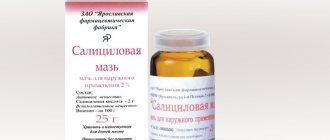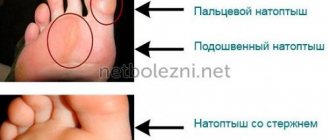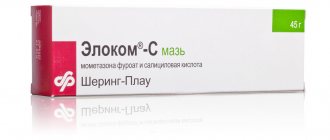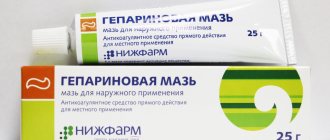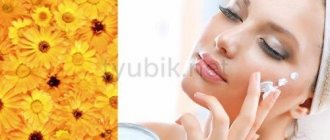Balsamic liniment (also known as Vishnevsky's ointment or liniment) is widely used in medical practice for various diseases.
The high effectiveness and safety of the drug made it especially popular. It is often used without medical prescriptions, self-prescribed for suppuration and various purulent ulcers and wounds that need to be cleansed of necrotic contents, making it impossible for them to heal.
The drug was created by Russian surgeon A.V. Vishnevsky in 1927. An effective medicine does not lose its popularity today, despite the abundance of antibiotics. Having a minimum of contraindications, the ointment can be used for most injuries and many diseases in children and adults. The product is now found in most home medicine cabinets in Russia and the CIS countries.
Composition and release form
This product is a liniment, that is, a “liquid ointment.” An interesting fact is that most liniments, according to the method of application, should be rubbed into the skin (the word liniment itself comes from the Latin verb “linire” - to rub), and Vishnevsky’s liniment is applied in a dense layer under the bandage, like an ointment. Maybe that’s why the name “ointment” was assigned to this remedy. For simplicity of presentation, we will also write “ Vishnevsky ointment ” in the article.
You can read how one form of the drug differs from another in this article.
We propose to understand in more detail the composition of this liniment and what is so special about it.
So, Vishnevsky’s ointment has the following composition:
- Birch tar - 3 parts;
- Xeroform - 3 parts;
- Aerosil - 5 parts;
- Castor oil (castor oil) - 89 parts.
This is a classic recipe and the best. Substitutions are acceptable in pharmaceutical technology, but this composition has absolutely no analogues.
Birch tar is a truly unique substance. It contains phenolic and terpene compounds, including betulin. These compounds cause its pungent, specific odor. It is thanks to him that Vishnevsky’s ointment has a sharp tar aroma, and resinous substances give the tar its dark color.
Molecules of phenolic compounds contain chemical groups of atoms that can attract and bind water. When tar preparations are applied to the skin, these compounds draw water from the deeper layers of the skin. This manifests itself as an osmotic effect. Together with water, toxins, microbes and pus come out of the tissues. Water “pulls” everything with it.
In addition, there is an irritating effect of tar, which manifests itself in improved microcirculation in the lesion.
Betulin is a biologically active substance with a complex structure and has many beneficial properties:
- Anti-inflammatory;
- Antiseptic;
- Antifungal;
- Antiviral;
- Antioxidant;
- Wound healing and regenerating;
- Antimutagenic;
- Dermatotropic;
- Improves trophism in tissues.
And these are only the effects when applied externally. In folk medicine, tar was used to treat problems with the gastrointestinal tract, but we will not dwell on this in this article.
This is what bismuth tribromophenolate looks like
Bismuth xeroform or tribromophenolate is a chemical compound also of phenolic nature, therefore it also has an osmotic and antimicrobial effect. Bismuth ion also promotes anti-inflammatory and tanning (drying) effects. Xeroform has the following properties:
- Astringent;
- Drying;
- Anti-inflammatory;
- Antiseptic;
- Osmotic;
- Acts as a preservative.
Due to the powerful antiseptic effect of these two components, tar and Xeroform, Vishnevsky’s liniment was called “balsamic”. Thereby emphasizing its antimicrobial - embalming properties. Therefore, the name “Vishnevsky’s balsamic ointment” is also often found.
Aerosil - colloidal silicon dioxide, excipient. Acts as a thickener for ointments and liniments.
Castor oil is an emollient and in this case acts as a base. Helps the components penetrate the skin better, since its composition is close to the composition of the skin secretion. It is known for certain that those substances that are of a fatty nature and close in composition to skin lipids penetrate better into the skin.
What do the doctor's say
In modern medical circles there is no consensus on the effectiveness of the legendary ointment. Some experts believe that it was good for its time, but against the backdrop of recent advances in the field of pharmaceuticals it looks very poor. There are those who openly doubt the existence of a “miracle cure” for any ailment. Their slogan goes something like this: “For every disease there is a cure.” From the point of view of evidence-based medicine, which emerged at the end of the 20th century, liniment is classified as a drug with officially unconfirmed effectiveness, and, therefore, is recognized as an outdated dosage form.
However, even among attending physicians you can find many fans of Vishnevsky ointment. Having solid medical experience behind them and a lot of examples from patient histories, they still prescribe balsamic liniment as an effective time-tested antiseptic. The natural composition of the drug, transparent pharmacology and the absence of contraindications are the most powerful arguments in favor of the ointment.
How does Vishnevsky Ointment work?
So, we have analyzed the composition and properties of the individual components of the product. Now let's take a closer look at the principles of its operation.
There is purulent inflammation, in which the sebaceous gland becomes infected with microbes. After infection, inflammation develops, aimed at limiting the infected area from healthy tissues due to swelling of surrounding tissues. At the same time, the blood supply in this area is disrupted and the permeability of the capillaries increases, so part of the plasma enters the lumen of this cavity (exudation occurs) so that immune cells (macrophages, leukocytes and others) enter the area of infection and begin to fight microbes. Thus, pus is formed - a mixture of exudate, living and dead microbes and their waste products, and dead immune cells.
Pimple in section
The pore-cleansing effect of Vishnevsky’s ointment is based on the law of osmosis, according to which the solvent (water) moves through a semi-permeable membrane (skin) towards a higher concentration of substances.
Since Vishnevsky ointment, when applied to the skin, creates an excessive concentration of water-attracting phenolic compounds and terpenoids, the movement of plasma, exudate and liquid purulent contents tends to the surface of the skin.
What is osmosis? We explained it in the picture
Do not be afraid of dehydration in the area where the product acts.
For two reasons:
- The irritating effect of the drug promotes blood flow to the area, that is, improvement of trophism. Given that some of the fluid from the tissues is directed osmotically upward to the surface of the skin, a constant flow of blood helps to better cleanse the area of pus. There is also “replenishment” of water in this area.
- Our skin is not even in a damaged state, so it constantly loses water. This is a natural process that helps cleanse the skin of toxins, microbes and waste products, and it is called trans-epidermal water loss (TEWL).
Transepithelial water loss
On the other hand, a powerful antiseptic effect prevents the development of microbes and promotes asepsis of the wound.
A wound devoid of germs heals much faster. But that's not all. Thanks to birch tar, a fairly strong healing effect is realized. In some cases, you will see new tissue forming in just one or two days before your eyes.
Indications for use
According to the manufacturers' instructions, Vishnevsky ointment has many indications, but some of them are inaccurate and contradictory.
For example, manufacturers recommend applying Vishnevsky's liniment to a wound, without explaining that this does not mean an open bleeding wound . Liniment can be applied to a wound that has already healed to speed up healing and prevent infection, but not to a fresh one.
It is also recommended to use it for eczema, which is not entirely advisable, and is often completely useless and can aggravate the course.
The ointment has a thick consistency, a brownish tint and a pronounced tar smell.
Now let's look at the actual indications for what the product is intended for:
- Treatment of trophic ulcers and bedsores (due to the antiseptic and healing effect);
- Treatment of burns (even 2nd and 3rd degrees) while maintaining the integrity of the skin and the formation of a scab
- Treatment of wounds and burns in the presence of a small amount of dead damaged tissue (necrotic masses);
- Treatment of shallow purulent inflammations with liquid contents;
- Treatment of shallow wounds of any nature without purulent contents, including those that are inflamed, for example, after scratching a cat.
When using Vishnevsky ointment on purulent lesions, the main condition under which it can be used is the presence of a path for the outflow of purulent contents of the wound.
Side effects
Among the side effects of Vishnevsky ointment are:
- Allergic reactions to one or more components of the drug;
- Skin irritation, both with single and long-term use (all individually);
- They write on the Internet that dryness is possible after use, this is not true. The composition contains castor oil, which moisturizes and softens the skin, in addition, the components of the product increase blood flow in the tissues, so this is less about dryness, and more about an allergy to Vishnevsky ointment, or rather, to any of the components.
If the drug does cause a burning sensation, this is due to intolerance to the components of the drug and skin irritation. Burning is also possible when applied to atopic skin, areas of rosacea and eczema, which, of course, should not be done for these diseases.
It happens that a problem arises that after using this product a pimple appears. This is directly related to the incorrect use of this drug. After all, this remedy is a priori one of the best remedies for treating ulcers. After reading this article in full, you will understand what you should and shouldn’t do to ensure that Vishnevsky’s ointment only has a positive effect!
special instructions
Wikipedia shows that at the moment there is no information about the effect of the drug on a person’s reaction and ability to drive.
People who are highly sensitive to phenol and derivatives should use the product with caution.
Do not allow the drug to come into contact with the eyes or mucous membranes. To prevent this, you need to wash your hands thoroughly after using the product. In case of contact, rinse with plenty of clean water.
Birch tar, which is part of the drug, can increase sensitivity to sunlight. In the summer, people undergoing treatment with these drugs should avoid being in direct sunlight.
Instructions for use
Vishnevsky ointment according to instructions for medical use from several manufacturers:
- Apply externally in a thin layer;
- A bandage soaked in liniment is applied to the wound;
- Used as a compress.
This is all completely wrong.
And that's why:
- When applied in a thin layer, a sufficient therapeutic effect of this drug does not develop.
- The liniment should not saturate the dressing, but should come into contact with the skin. And when soaked, most of the product will remain in the dressing material.
- A compress is the application of a bandage soaked in a liquid solution, and this liniment certainly cannot be called liquid.
So, how to use this remedy correctly?
Expiration date and prices
The optimal temperature at which liniment should be stored is 15-20°C. The shelf life of Vishnevsky ointment is indicated by some manufacturers as 3 years, and by some others as 5 years.
It is recommended to store the drug in its original packaging and avoid direct sunlight.
The external product is produced in Russia and Belarus; there are no imported drugs with the same composition. The average price of Vishnevsky ointment in Russian pharmacies is 30-70 rubles. The drug in jars is cheaper - from 27 to 31 rubles. The price of ointment in aluminum tubes is from 70 to 130 rubles.
Use during pregnancy and lactation
It is also possible to use Vishnevsky Ointment during pregnancy, but, of course, according to indications and on the recommendation of a doctor. Considering that this drug is for external use only, and there is no data on the penetration of the drug components into the bloodstream.
Appropriate studies of this drug in pregnant women have not been conducted. Our recommendation is not to use this drug in the first trimester of pregnancy, including due to possible toxicosis. In general, protect yourself from the need to take any medications other than essential ones during pregnancy.
The same applies to the lactation period. If it is necessary to use the drug during lactation, according to the instructions for medical use, breastfeeding should be stopped for a while.
Use in children
It is also permissible to use Vishnevsky Ointment to treat children, but only under the supervision of adults and on the recommendation of a doctor. This is what the instructions say, although the specific age is not indicated there.
We recommend that if there is a need to use this product, you should start using it no earlier than 10-12 years of age, unless your doctor prescribes otherwise in your particular case. As a rule, children do not have such a need due to increased tissue regeneration and good immunity. Necessity here means skin damage accompanied by purulent discharge due to contamination of the wound, and not teenage acne, especially on the face.
Some mothers ask whether Vishnevsky ointment can be used for a child under one year old? Questions like these confuse me.
Firstly , everything that concerns small children, especially under one year old, especially newborns - immediately, immediately, the first thing you need to do is consult a doctor!
Secondly , what has to happen to a child under one year old to require such treatment?!
Vishnevsky ointment is a sharp-smelling substance, such children under one year old, even I would say up to 8-10 years old, are not prescribed, in addition, in the composition of xeroforms, which should not be applied to children, especially small ones, due to the high resorptiveness (permeability, absorption) of the skin children.
Therefore, dear mothers, if you are reading this, monitor your child properly and, of course, first of all, think with your own head.
Reviews
Irina, 31 years old:
From time to time, single pimples appear on the body. Since adolescence, my grandmother advised me to apply Vishnevsky ointment. I did this with an adhesive plaster. In each case, it was possible to quickly get rid of the inflamed spots. When studying the instructions, I was pleasantly surprised by the wide spectrum of action of the composition, which the drug and the simple method of use help with.
At the moment, to solve such problems I use liniment and Levomekol ointment. The effectiveness and pricing policy of both drugs are the main advantages of the drugs.
Sergey, 40 years old:
A couple of years ago I had to see a doctor with an abscess in the armpit. On the advice of a specialist, I applied compresses from Vishnevsky’s ointment to the causative area for 3 days. On the fourth day, the abscess opened. Thanks to an affordable and effective drug, I experienced great relief. The only drawback of the product is the smell of the composition, but this is not a priority in treatment.
Maria, 27 years old:
A few months ago I was in a gynecology hospital with severe inflammation. After discharge, the doctor advised to use tampons with Vishnevsky ointment for 5 days to consolidate the effect. This remedy was part of a comprehensive treatment in the hospital, but only at home I felt an incredibly unpleasant aroma. I made an appointment with the doctor to replace the drug with some analogue. At the appointment, the specialist spoke briefly about the healing qualities of the ointment, after which I changed my mind about liniment. This unique composition, which has not lost its popularity among a large number of new products, really saves people's lives.
My experience using Vishnevsky ointment
Once, while working with disinfectant solutions, I got splashed. The product was thick and had an anesthetic effect on the skin (it’s just that some toxic substances can also reduce skin sensitivity), so I didn’t notice it right away. A couple of hours later, a severe chemical burn developed with tissue whitening; I was afraid there would be necrosis. I washed it with plenty of water, but the product penetrated the skin and it was too late. After a while, the anesthesia wore off and pain began in this area.
I took painkillers, applied Eplan for the first 3 days, it reduces toxicity, promotes cell regeneration and has a slight analgesic effect.
Eplan helped a lot, but then the damaged tissues began to be rejected by healthy ones, I stopped smearing for 1 day and observed. Since the damage was deep, about 5 mm, the rejected material began to crack and become wet, and pus began to appear. Here, of course, the choice was obvious - Vishnevsky Ointment for a bandage. I changed the bandage 2-3 times a day and used it for 4 days. In the photo below you can see the effect of use, namely the before and after photos.
Vishnevsky ointment Before and After
Photo 1 shows before using Vishnevsky ointment.
In the 2nd photo - after 2 days of use. The pus and necrotic tissue had gone away, the living damaged tissue had almost healed, but there was a crust that was drying out and cracking, so I decided to leave it for another couple of days until all the dead tissue had gone away.
Photo 3 shows after 4 days of use.
In the 4th photo - 3 days after the end of treatment with Vishnevsky ointment, all this time I actively applied Methyluracil (that’s why the skin is so shiny).
Analogs
Having once encountered Vishnevsky's ointment in the past, one cannot forget this pungent smell of tar. We will present several popular remedies that are often cited as analogues of Vishnevsky ointment in terms of action or expected effect.
Without smell
This product has analogues without an unpleasant odor, among which are:
- The drug Dimexide;
- Levomekol ointment;
- Hypertonic sea salt solution.
So, if you are faced with the impossibility of using the product due to a pungent odor, then be sure to pay attention to these analogues.
Dimexide
This product is a concentrated solution of Dimethyl sulfoxide. Unlike Vishnevsky ointment, it has a barely perceptible odor.
This product is available in the form of a solution with a concentration of 99%; there is also a dosage form of Diemeskid gel with a concentration of the active substance Dimethyl sulfoxide - 25%.
Most often, in this concentration -25%, liquid Dimexide is used in compresses to treat joint pain along with other components.
Dimexide has the following positive properties:
- Analgesic (This is directly related to the effect on pain, nociceptive, peripheral neurons.);
- Anti-inflammatory (By reducing the inflammatory effect of histamine and prostaglandins - substances responsible for the development of inflammation. In addition, reducing inflammation in the lesion helps reduce pain - this is how an indirect analgesic effect is manifested.);
- Improving microcirculation at the site of inflammation;
- It has a moderate antiseptic effect (But it is not used independently as an antiseptic due to the fact that at high concentrations it can cause a chemical burn.)
- Improves the penetration of other medicinal substances into tissues.
Actually, we have come to his main role. Dimexide is used together in the form of compresses or lotions:
- With anti-inflammatory drugs to treat joint pain;
- With heparin for the treatment of thrombophlebitis;
- With antibiotics for the treatment of boils, acne, purulent inflammation.
That is, this product has antagonism with birch tar, which is the main active ingredient of Vishnevsky’s liniment. If Vishnevsky promotes the fact that all the discharge from the wound strives to come out, then Dimexide, on the contrary, promotes the penetration of drugs into the purulent focus.
Regarding the replacement of these two remedies, you should consult your doctor regarding your specific situation. The use of a combination of Dimexide with antibiotics is advisable if a person is intolerant to the smell of birch tar. Dimexide also contributes to the slower development of bacterial resistance to the antibiotics with which it is used.
To treat pimples and acne, you can read the recipe for mash with Dimexide in this article.
Salt compresses
Salt compresses made from sea salt also have a strong osmotic effect. And although this is a whole procedure, and not a drug, we decided to classify it as an analogue of Vishnevsky ointment, namely in terms of osmotic and anti-inflammatory effects.
The saline solution is prepared in a concentration of no more than 10%; such a solution is hypertonic - that is, its concentration is higher than the salt content in the blood plasma. A solution with the same salt content as in blood plasma is called isotonic.
Salt compresses
In an isotonic solution, the concentration is 0.9%, that is, the solution contains 9 grams of salt per 1 liter of water. To get a hypertonic solution with a concentration of 10%, you need to take 100 grams of salt per 1 liter of water or 10 grams of salt per 100 milliliters of water (this is about 1 level tablespoon of salt and about half a glass or medium-sized mug of water). If in doubt, add a little less salt or a little more water.
The resulting solution should be soaked in a piece of cloth or gauze folded in 4-6 layers, then the cloth should be applied to the damaged area and a plastic film should be placed on top, which can be secured with a plaster or bandage.
For purulent inflammation of the skin, such compresses should be made for several days, 2-3 times a day and kept on the damaged area for 30 minutes - 1 hour.
Under no circumstances should such a compress be applied to burns or open wounds! Only on intact skin.
The price of sea salt in pharmacies is from 30 to 100 rubles per 500 grams.
